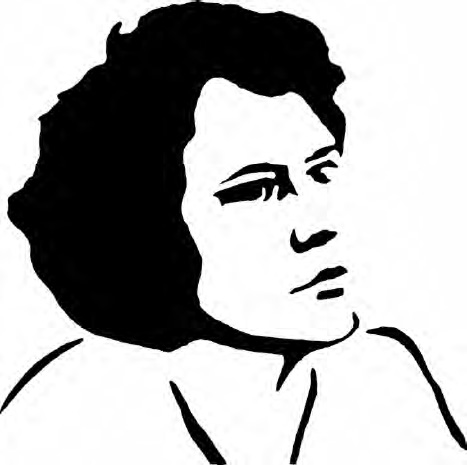

Haydée Santamaría Cuadrado was a Cuban revolutionary and advocate of politically dissident artists. She was born on a sugar plantation in central Cuba, one of five children born to small-time landowners of Spanish descent. In the early 1950s, Haydée moved to Havana with her younger brother Abel and both siblings became involved with the growing movement against the corruption of the Batista dictatorship. By the end of the revolution, the whole Santamaría family was involved in direct action.
On July 26, 1953, Haydée was one of two women who participated in the assault, headed by Fidel Castro, on the Moncada garrison. One hundred and twenty rebels attempted to take Moncada with the objective of securing the weapons kept there. The attack resulted in the deaths of two-thirds of the insurgents, some in the fighting and some (including Haydée’s brother Abel and lover Boris) during the capture and torture by the Batista regime. Haydée was imprisoned and tortured. The guards brought her the bleeding eye of her brother and threatened to tear out his other eye, but she replied “If you tore out an eye and he did not speak, neither will I.”
She was eventually released, and smuggled out of prison page-by-page Fidel Castro’s famous defense, History Will Absolve Me.
Haydée later joined Castro and Che Guevara’s guerilla fighters in the Sierra Maestra mountains and fought during the war in the “Marianas,” a women’s battalion of the rebel army. She also travelled to the United States to raise funds and purchase equipment, spending the war as a gunrunner, tactician, international fundraiser, coordinator of the urban underground, and guerrilla combatant.
Following the victory of the revolution on New Year’s Day 1959, Haydée founded a cultural institution called la Casa de las Américas. As its director for twenty years, Haydée provided intellectual and physical refuge for artists and writers in exile from Latin American dictatorships.

Haydée’s communist philosophy embraced internationalism and was always opposed to “sovietization” or imposing rigid Stalinist bureaucracy and dogmatic thought on Cuba. She had no time for dogmatism or for so-called socialist realism.
La Casa de las Américas published numerous books by Latin American dissidents which were too controversial to be published at home. Casa also brought some of the world’s most celebrated dancers, musicians, painters, and theater groups to the island as part of the revolutionary imperative to rectify decades of cultural elitism and to bring art to the Cuban people. Casa houses one of Latin America’s most extensive art collections and libraries.
During the 1960s, Haydée and her fellow revolutionary Armando Hart Davalos had a son and a daughter, whom they named Abel and Celia.
Haydée had a near-fatal car accident in 1980 that left her in constant pain. She committed suicide several months later.
“There is a moment when all things can be beautiful, heroic. That moment when life defies death and defeat, because one holds on to it, because it’s so important not to lose it. At such a moment, one risks everything to preserve what really counts. Life and death can be beautiful and noble, when you fight for your life, but also when you give it up without compromise. All I have wanted to show our young Cubans is that life is more beautiful when you live that way. It is the only way to live.”